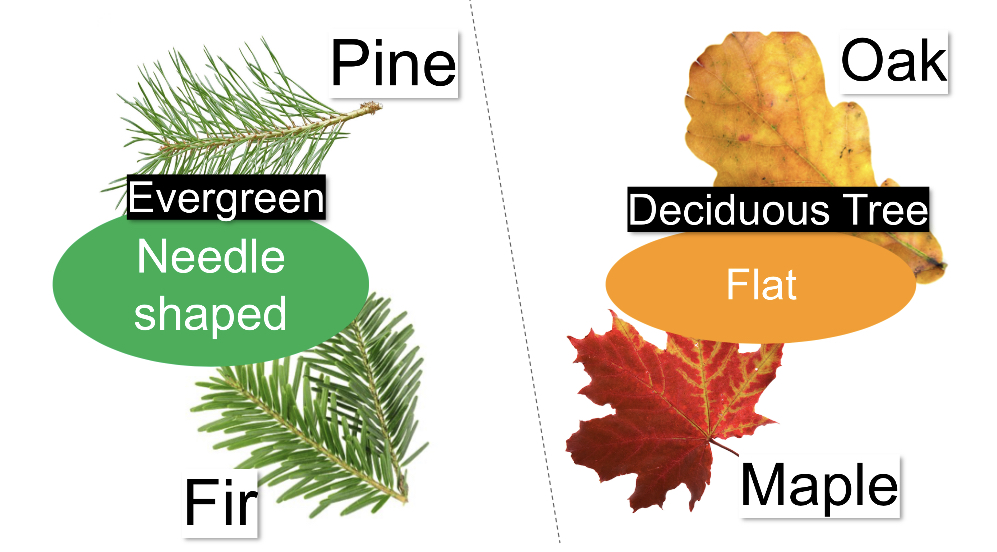When learning about nature in Montessori, a topic that reflects the seasons are chosen and taught with real materials as much as possible. Children learn and fully observe the various forms of nature using sight and tactile or with other senses. Then, as in any Montessori activity, recapitulation is used to establish what has been learned.
What is the general structure of a Montessori activity? In brief,
(1) Attracting the child’s interest
(2)Context Setting of the work (showing lesson content)
(3) Presentation of the work (the actual lesson)
(4) Recapitulation (review)
Classes at school are similar to this, but the major difference from a regular classes at school and Montessori is that they are not in a lecture format.
For example, if you are intending to teach “evergreen and deciduous trees” to a 5-6 year old at home, you can do the following in autumn.
(1) Get the child’s attention.
(2) Talk about the fact that some trees change their color of the leaves in autumn and others don’t.
(3) Ask them to observe the trees in the park or on the streets, and explain using pictures.
A simple explanation of deciduous are, which depends on the child’s level of understanding: “It will get colder in autumn. That is because the sunlight is decreasing. Deciduous trees use the power that keeps them green for their roots and trunks.”
If the child seems to understand more, you can add a brief explanation of photosynthesis.

(4)Let the child draw a picture of the leaves of deciduous tree and evergreen.

The easiest way to describe an evergreen tree is a Christmas tree. They remain green even in winter.
It is a good idea to ask them to remember what color (visual), texture (tactile), and thickness (three-dimensional) they were when they drew the picture.

